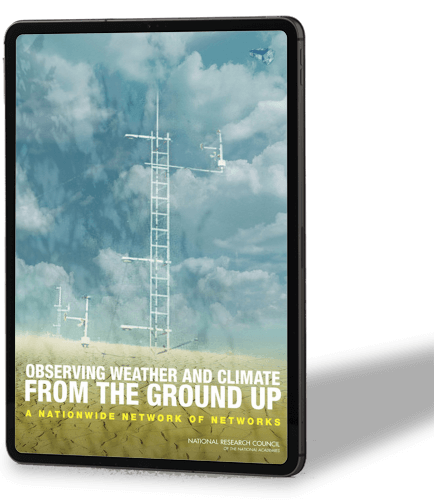National Mesonet Program
Gold standard public-private-academic partnership providing high quality weather data to the National Weather Service.

Synoptic Data stands at the forefront of advancing weather forecasting and situational awareness as the Lead Subcontractor for the National Mesonet Program (NMP), a pioneering Public-Private-Academic Partnership led by NOAA. By expertly handling contracting, data aggregation, quality control, and data delivery to the National Weather Service (NWS), Synoptic enables the seamless flow of essential weather data that bolsters the NWS’s mission to protect life, property, and the economy.
The NMP bridges critical data gaps across the United States by incorporating non-federal weather observations from over 55 partners in industry and academia. This collaborative effort supplements federal data sources, enhancing numerical weather prediction, situational awareness, and real-time forecasting to support severe weather watches and warnings.
With access to data from various sources—surface, upper-air, radar, and mobile platforms (including aircraft, balloons, and buoys)—NWS forecasters gain a more comprehensive view of evolving weather conditions. The higher resolution and frequency of these observations leads to improved “ground truth” and situational awareness, enabling earlier and more accurate severe weather warnings. This extensive data network not only elevates forecast accuracy but does so at a reduced cost, freeing up federal resources for broader initiatives.
Synoptic’s commitment to continuously seeking new and impactful datasets strengthens the NMP’s mission and ensures that the NWS has access to the most complete and timely information available. For more details on this vital program, please visit the National Mesonet Program website.
National Commercial Partners
National Mesonet Program History
In 2004, tragedy struck Baltimore’s Inner Harbor. Fierce winds associated with an unforecasted storm went undetected by the National Weather Service (NWS) observational equipment resulting in the capsizing of a water taxi and the deaths of five people. There were; however, private non-federal weather stations upwind of the area that were tracking the storm, but the NWS did not have access. Had public-private arrangements for data sharing been in place at the time, it is very possible that weather warnings for the event would have been issued and the incident subsequently averted.
On March 6, 2004, the small passenger vessel Lady D, a pontoon water taxi with 2 crewmembers and 23 passengers on board, was en route from Fort McHenry to Fells Point, Maryland, when it encountered a rapidly developing storm with high winds.
In 2006, as a direct result of the Baltimore water taxi accident, Maryland Senator Barbara Mikulski established the congressionally-directed UrbaNet program. Urbanet instructed the National Oceanic and Atmospheric Administration (NOAA) to work with the private sector to determine if non-federal weather data sources could be used for decision making. Shortly thereafter in 2009, the National Academy of Sciences “Ground Up” report on establishing a “nationwide network of networks” for hydrometeorological data was published.
This report offered many findings relative to the existing state of our nation’s observing and forecasting infrastructure as well as recommendations for improvements. Chief among them was that the public, private, and academic participants in the Weather, Weather, and Climate Enterprise (WWCE) should work collaboratively and that existing observational assets, many of which were operated by private and academic entities, should first be leveraged to the maximum extent possible before any new federal infrastructure was established. To this end, the UrbaNet program was expanded to include numerous universities that were operating respective state-wide mesonets and thus renamed the National Mesonet Program (NMP).
Observing Weather & Climate from the Ground Up
A National Academy of Sciences Report in Brief
Read Online
